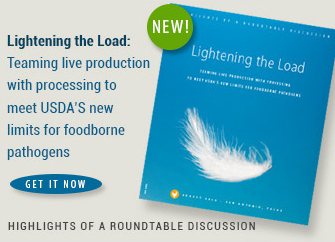Want the recipe for a VFD? Here are 14 key ingredients
Issuing a veterinary feed directive (VFD) involves more than just completing a form and sending it to the producer and feed mill.
Veterinarians need to have 14 key ingredients on hand to include in the VFD:1
- Veterinarian’s name, address, telephone number
- Client (poultry producer or flock caretaker’s) name, business or home address, telephone number
- Premises where flocks specified in the VFD are located
- Date of VFD issuance
- Name of VFD drug
- Production class of animals (e.g., broilers, layers) to be fed the VFD feed
- Approximate number of birds that will consume the VFD feed by the expiration date of the VFD
- Indication for using the VFD drug
- Level of VFD drug in the feed and its duration of use
- Withdrawal time, special instructions and cautionary statements needed for using the drug in conformance with the approval
- Number of refills authorized if permitted by the drug approval, conditional approval or index listing
- The statement: “Use of feed containing this veterinary feed directive (VFD) drug in a manner other than as directed on the labeling (extra-label use) is not permitted.”
- Affirmation of intent for combination VFD drugs
- Veterinarian’s electronic or written signature
Poultry veterinarians can provide additional information at their discretion to more specifically identify flocks they authorize to receive a VFD drug in feed. For instance, they might include the location of animals by site, pen or barn as well as the animals’ approximate age and weight.
In addition, veterinarians will also need to indicate which, if any, FDA-approved drug combinations may be used as part of the VFD.
1. #120 Guidance for Industry Small Entity Compliance Guide Veterinary Feed Directive Regulation Questions and Answers. FDA. http://www.fda.gov/downloads/AnimalVeterinary/GuidanceComplianceEnforcement/GuidanceforIndustry/UCM052660.pdf Accessed December 15, 2015.
Posted on March 3, 2017

















